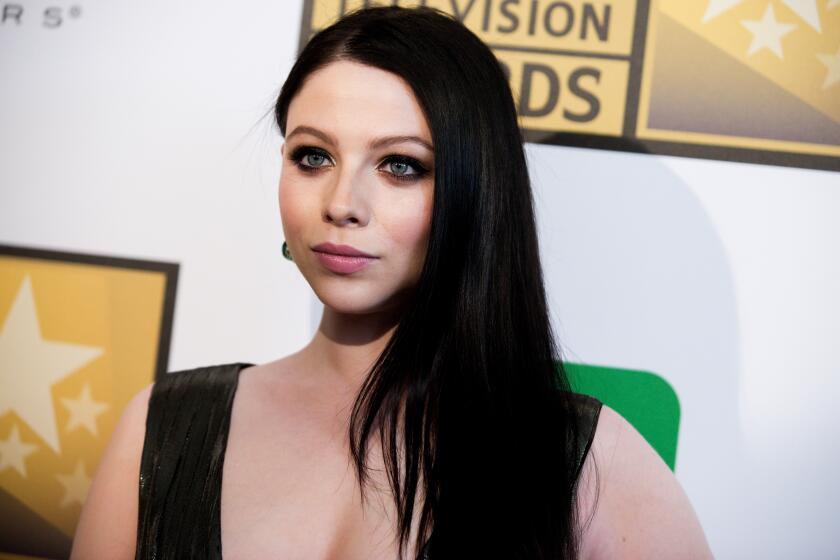The Costumes: Sharen Davis drew on her Southern roots for ‘The Help’
- Share via
Costume designer Sharen Davis says she struggled somewhat with the glowing Easter-egg palette in this summer’s “The Help.” It’s based on the bestselling novel from Kathryn Stockett about a young journalist (Skeeter, played by Emma Stone) who writes a book chronicling the domestic help horrors of the Jim Crow South and is filled with young bridge-club-type Southern belles of the early 1960s.
Davis, who is originally from the South and who majored in acting in school, says she “got what the characters were about early on. For me to do my job, I need to know how a character feels and how the director feels, and then I work off the character.”
Davis, nominated for two Oscars for her previous work on “Dreamgirls” and “Ray,” says: “I was so lucky. I got to have Emma early on in production, so by the time the filming started, I pretty much had it nailed. For me, I need to have my leading character done, and then I design outwards from there.” She says all the over-eager colors “turned out perfectly in the end.”
“The Help” was set in the “Mad Men” era, but it sure doesn’t look like “Mad Men” in terms of clothes.
[Laughs.] Of course, I love “Mad Men,” but “Mad Men” is New York; it’s adult, metropolis, city; and I had to work really hard not to do [that style]. These girls were so young and weren’t trying to get into business and do the things women in New York were trying to do. And besides, I’m from Louisiana, and the sensibilities of the South have always been different from the North. It needed to have a kind of sorority feel to it rather than working-woman style. I dressed Skeeter in more neutrals since she was going to New York and trying to fit into business and came right from college with a more collegiate, less formal look. I took hers from old Ole Miss yearbooks.
So where else did you find inspiration for these young Southern women?
I worked a bit off my memories, but when I started my research, I was really just stuck. I’d look at Vogue and Life magazines, and I wasn’t seeing what I knew I needed to see, until I opened an early ‘60s Seventeen magazine, and there were all the pastels and ultra-feminine prints and patterns. When I looked at Sears, JC Penney, Montgomery Ward’s catalogs, they’re all there, bright and perky.
How closely did you take your cues from the book the film was based on?
I read the book before I started the movie, and I really tried to stay true to at least the author’s silhouettes. The book starts with Hilly (Bryce Dallas Howard) in a plaid dress with tons of bows on it, and I thought, ‘Oh, that would be kind of obnoxious,’ so I did a bright floral dress with bows. So when Minnie (Octavia Spencer) says, “She looks like a show horse with all those bows,” the line is still there.
When you got this job, what direction were you given?
The direction was just to keep them innocent, because that’s what they are, innocent young women. Aibileen’s (Viola Davis) great line says it: “These are just babies making babies,” and that was the story’s overarching theme. And Hilly was just so uptight. Even though she’d be floral and super-feminine, I never exposed her breasts. She was always up to the neck. Even her evening dress had sheer sleeves on it. No skin ever.
Were the maids’ uniforms true to the era, or did you tweak them? I understand your grandmother worked as domestic help in Louisiana during this period?
I tweaked them. In the book, they’re all white, and they did wear white in that era, like a nurse’s uniform. But we screen-tested a few colors, and I finally requested gray because gray is a universal color for domestics, and in fact was the color my grandmother wore. Also, there were so many maids in the film it would have been odd if I dressed them all in the exact same uniform. So I talked to each one and tweaked each costume as to how I felt the character felt; was she educated, did she care, etc? Cicely Tyson is the only one I put in a full white uniform.
When you saw the finished film, what was your first impression?
To tell you the truth, I was a little overwhelmed at how bright it was. I was a bit taken aback: “My goodness, it’s so bright!” I kept toning it down; toning down the color, toning down the color. So, when I finally saw the film, I thought, “Wait a minute.” But then when I thought about it later, it’s not so much bright as it is busy. It’s a color palette I’m not familiar with, but it captures an innocence and a youth that needs to be caught to get the story. So it actually worked beautifully well in the end.
More to Read
The biggest entertainment stories
Get our big stories about Hollywood, film, television, music, arts, culture and more right in your inbox as soon as they publish.
You may occasionally receive promotional content from the Los Angeles Times.










